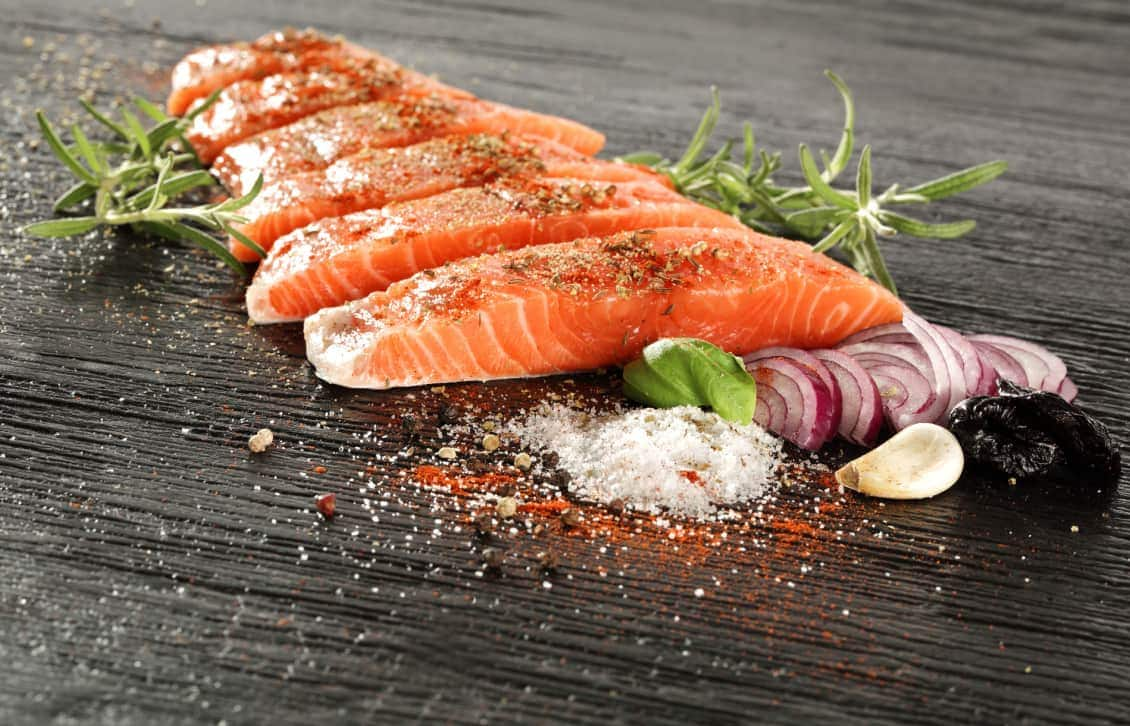How to Prepare the Perfect Salmon for Cooking

SALMON PREP 101
The foundation of any salmon dish is, of course, the salmon itself. In order to create the perfect salmon dinner, you must take care to prep your cut of fish properly.
Remove Pinbones
When a fish is filleted, the flesh is removed from the backbone and ribs, but the relatively soft, thin, needle-like pin bones, also known as intermuscular bones, are not attached to the main skeleton and thus must be removed in a second step. While most fish are sold with the pin bones removed, they are difficult to see and are sometimes missed by the fishmonger. When preparing recipes like the Oven-Roasted Salmon or Poached Salmon with Herb Vinaigrette, it’s always a good idea to check for bones before cooking.
1. Drape fillet over an inverted mixing bowl to help any pin bones protrude. Then, working from head end to tail end, locate pin bones by running your fingers along length of fillet.
2. Use tweezers to grasp the tip of bone. To avoid tearing flesh, pull slowly but firmly at a slight angle in direction bone is naturally pointing rather than straight up. Repeat until all pin bones are removed.
To Skin or not to Skin?
Skin-on salmon fillets is often used in oven-roasted Salmon recipe; the skin helps shield the flesh from the high heat environment. But for more gentle, even cooking of salmon recipes, skinned salmon works best. You can ask your fishmonger to do the skinning for you, or you can follow these steps to do it yourself.
1. Using the tip of a boning knife (or sharp chef’s knife), begin to cut skin away from fish at corner of fillet.
2. When enough skin is exposed, grasp skin firmly with piece of paper towel, hold taut, and carefully slice flesh off skin.
Get Ready to Roast
After trimming any belly fat and portioning the salmon into individual fillets, we score the skin to allow the ample fat between the skin and flesh to render, or melt, as it roasts.
1. Hold a sharp knife at a slight downward angle to the flesh and cut off the whitish, fatty portion of the belly.
2. Cut the salmon fillet into four pieces of equal size to help ensure that they cook at the same rate.
3. Make four or five shallow slashes along the skin side of each piece of fish, being careful not to cut into the flesh.




